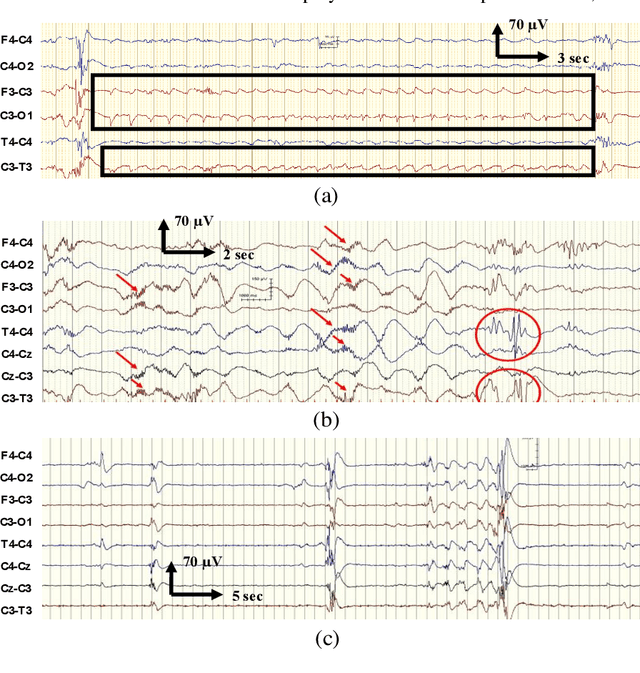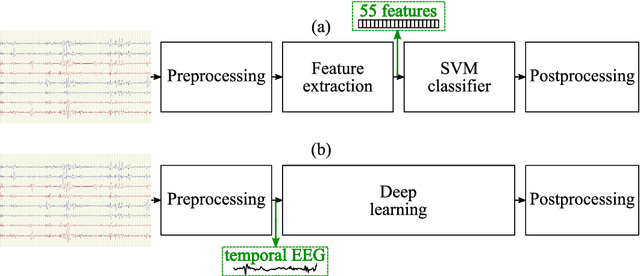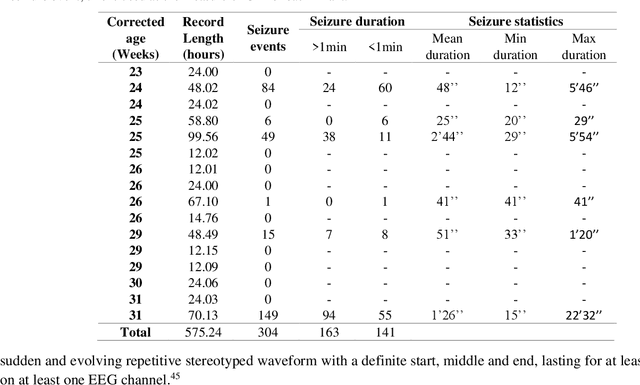Sean Mathieson
Deep Learning for EEG Seizure Detection in Preterm Infants
May 28, 2021



Abstract:EEG is the gold standard for seizure detection in the newborn infant, but EEG interpretation in the preterm group is particularly challenging; trained experts are scarce and the task of interpreting EEG in real-time is arduous. Preterm infants are reported to have a higher incidence of seizures compared to term infants. Preterm EEG morphology differs from that of term infants, which implies that seizure detection algorithms trained on term EEG may not be appropriate. The task of developing preterm specific algorithms becomes extra-challenging given the limited amount of annotated preterm EEG data available. This paper explores novel deep learning (DL) architectures for the task of neonatal seizure detection in preterm infants. The study tests and compares several approaches to address the problem: training on data from full-term infants; training on data from preterm infants; training on age-specific preterm data and transfer learning. The system performance is assessed on a large database of continuous EEG recordings of 575h in duration. It is shown that the accuracy of a validated term-trained EEG seizure detection algorithm, based on a support vector machine classifier, when tested on preterm infants falls well short of the performance achieved for full-term infants. An AUC of 88.3% was obtained when tested on preterm EEG as compared to 96.6% obtained when tested on term EEG. When re-trained on preterm EEG, the performance marginally increases to 89.7%. An alternative DL approach shows a more stable trend when tested on the preterm cohort, starting with an AUC of 93.3% for the term-trained algorithm and reaching 95.0% by transfer learning from the term model using available preterm data.
Neonatal EEG Interpretation and Decision Support Framework for Mobile Platforms
Jun 08, 2018



Abstract:This paper proposes and implements an intuitive and pervasive solution for neonatal EEG monitoring assisted by sonification and deep learning AI that provides information about neonatal brain health to all neonatal healthcare professionals, particularly those without EEG interpretation expertise. The system aims to increase the demographic of clinicians capable of diagnosing abnormalities in neonatal EEG. The proposed system uses a low-cost and low-power EEG acquisition system. An Android app provides single-channel EEG visualization, traffic-light indication of the presence of neonatal seizures provided by a trained, deep convolutional neural network and an algorithm for EEG sonification, designed to facilitate the perception of changes in EEG morphology specific to neonatal seizures. The multifaceted EEG interpretation framework is presented and the implemented mobile platform architecture is analyzed with respect to its power consumption and accuracy.
 Add to Chrome
Add to Chrome Add to Firefox
Add to Firefox Add to Edge
Add to Edge